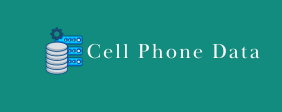Cold calling remains a powerful sales tool, but its effectiveness skyrockets when you move beyond a “spray and pray” approach. In today’s data-rich world, intelligent use of information can transform your cold calls from frustrating dead ends into valuable conversations. By leveraging data, you can identify the right prospects, personalize your outreach, and ultimately close more deals.
The Problem with Blind Cold Calling
Traditional cold calling often involves reaching out to a vast, undifferentiated list of potential customers. This not only wastes valuable time and resources but also leads to high rejection rates and low morale for your sales team. Without understanding who you’re calling, their pain phone number data points, or their likelihood to convert, you’re essentially gambling.
H2: Leveraging Data for Smarter Prospecting
The first step in optimizing cold calling is to refine your lead generation process using data. This isn’t just about getting contact information; it’s about understanding the quality of that information.
H3: Identifying Your Ideal Customer Profile (ICP)
Before you even pick up the phone, use your existing customer data to build a robust Ideal Customer Profile (ICP). Analyze your most successful clients:
- Demographics: What industries crafting the right message for success are they in? What’s their company size? Where are they located?
- Firmographics: What’s their revenue? How many employees do they have?
- Technographics: What software or technologies do they use?
- Behavioral Data: How did they interact with your website or previous marketing campaigns?
This detailed ICP acts as a filter, allowing you to focus your cold calling efforts on companies that genuinely fit your solution.
Scoring and Prioritizing Leads
Not all leads are created equal. Implement a lead scoring system based on how well a prospect aligns with your ICP and calling list their engagement history.
Data Points for Lead Scoring
- Website activity: Pages visited, content downloaded, time spent on site.
- Email engagement: Opens, clicks, replies.
- Social media interactions: Mentions, follows, direct messages.
- Industry trends: Is their industry experiencing growth or specific challenges your solution addresses?
- Company news: Recent funding rounds, new hires, product launches.
By assigning scores, you can prioritize leads with the highest probability of conversion, ensuring your sales team focuses their energy where it matters most.
Personalizing Your Cold Calls with Insights
Once you have a prioritized list, data empowers you to personalize your outreach, making your cold calls less “cold” and more relevant.
Researching Before You Dial
Use publicly available data sources to gather intelligence on each prospect:
- LinkedIn: Understand their role, tenure, and recent activity.
- Company Website: Learn about their mission, products, and recent news.
- News Articles & Press Releases: Identify recent challenges, successes, or strategic shifts.
- Annual Reports: For larger companies, gain insights into their financial health and strategic objectives.
This pre-call research allows you to tailor your opening line, reference specific pain points, and demonstrate genuine understanding of their business.
Crafting Data-Driven Value Propositions
Armed with data, your value proposition becomes highly targeted. Instead of generic benefits, articulate how your solution directly addresses their specific challenges or helps them achieve their stated goals. For example, if you know a company is struggling with a particular software, you can immediately pivot your conversation to how your solution integrates or offers a superior alternative.H2: Analyzing and Adapting Your Strategy
Data doesn’t just inform your initial outreach; it also helps you continuously improve your cold calling strategy.
Tracking Key Performance Indicators (KPIs)
Monitor metrics such as:
- Connect Rate: Percentage of calls that result in a conversation.
- Conversion Rate: Percentage of conversations that lead to a next step (e.g., demo, meeting).
- Average Sales Cycle: Time from initial contact to close.
- Win Rate: Percentage of opportunities that convert into customers.
A/B Testing Your Approach
Experiment with different opening lines, value propositions, and call scripts. Use data to determine what resonates best with different segments of your audience. If one approach consistently yields higher connect rates or conversion rates, adapt your strategy accordingly.
Conclusion
Cold calling, when integrated with a data-driven approach, transforms from a numbers game into a strategic operation. By using data to identify ideal prospects, personalize your outreach, and continuously optimize your strategy, you’ll not only boost your cold calling success rates but also build stronger, more meaningful connections with potential customers. Start leveraging your data today to unlock the full potential of your cold calling efforts.
